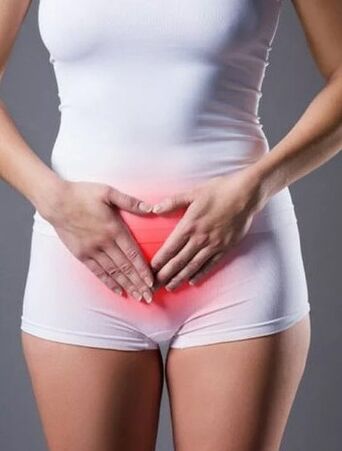Cystitis is an inflammatory process localized in the bladder. Along with it, inflammation of the urethra develops, or urethritis.
The characteristic features of the cystitis are:
The remaining sensation of burning and rubber after all and immediately after the act of urination
Painful urination
Pain syndrome located in the lower abdomen and in the lumbar region
Urine incontinence is possible
Change of urine color (bloody or muddy)
Increasing body temperature up to fever
Deterioration of general well -being.
Causes of the disease
Factors that provoke cystitis serve:

Infectious Factor:
Is represented by an E. coli, streptococci and/or staphylococci, in view of the narrow location of the anus and urethra (in women);
Sexual infections (ureaplasma and mycoplasma);
Instrumental intervention or introduction of infection into the urethra or bladder (most often Gram-negative cellular microorganisms);
Fungi, chlamydia, viruses;
Inflammation in a man's genitourinary organs (seed bubbles, testicular supplements, etc. );
Tumor formations;
Anatomical deviations;
Allergies to care products (vaginal deodorants, color hygiene paper, talc, all types of perfume soap);
Rare urination (characteristic of the elderly).
Troubleshooting
The following laboratory methods are used to diagnose the disease:
A blood test (general) shows changes, among which there is a moderate inflammatory process
Urine analysis (general) shows color changes due to the presence of uric acid, leukocytes, red blood cells, proteins and in some cases there is a religious odor
Urine analysis by Nechiporenko allows you to investigate the organs of the genitourinary system and their condition by calculating the number of leukocytes, red blood cells and cylinders in the urine. The results of the study are affected by the correctness of the material of the material, and the patient's compliance with personal hygiene rules.
Pathogenic microflora can be detected with an increased amount of nitrates in the urine, detected using an indicator strip
The presence of pus in the urine is detected by a leukocyte reaction.
In addition to laboratory diagnosis for cystitis detection, instrumental methods are performed, the most common of them are cytosospels, biopsy, ultrasound, STD/STPP diagnosis and others.
Complications
With a non -radical nature of treatment, the cystitis can not only go to a chronic form, but also complicate with diseases such as:
a condition in which the kidney function is disturbed - the volume of the released urine is reduced
Inflammation extends to the mucous membrane and the renal muscle layer, which is replaced by the result of the cicatric tissue, which leads to a decrease in the size of the kidneys and elasticity of its capsule.
PMR - damage to valve structures, as a result of which the urine is detected in the leak - again in the kidney. At the same time, the localization of the infection in the urinary system is preserved and the chronic form of pyelonephritis occurs, renal tissue tooth and a complete impaired kidney function.
Treatment of the disease
The therapy of the disease is based on the elimination of microbial inflammation-the root of the cystitis, which often occurs due to a weakened immune status. Therefore, the treatment of pathology involves the use of the following groups of medication:
Anti -inflammatory drugs (NSAIDs)
Antibacterial drug
Immunomodulators.
Risk group
The risk group is a weakened immunity, women infected with HIV and pregnant.
PREVENTION
Cystitis prevention measures serve:
The lack of hypothermia
Examination of a gynecologist every six months for STD/SPPP
Strict observance of hygiene, especially during sexual contact
Rejection of narrow inner (thongs) and synthetic
Care for sufficient lubrication during intimacy
The right diet
The prevention of constipation
Strengthening immunity.
Diet and lifestyle
In manifesting signs of pathology, it is necessary to limit the use of solid food, replace it with soup, jogurts, puree with puree and a large liquid volume. After a decrease in acute symptoms, a gradual introduction of the solid food diet is allowed - from grains, nuts and legumes. A variety of freshly squeezed juices (both vegetables and fruits) are useful for the body.
When the fever is to be observed, the rest of the bed, the warm compresses and baths should be used. You can eliminate stagnant phenomena using cold compresses.





























